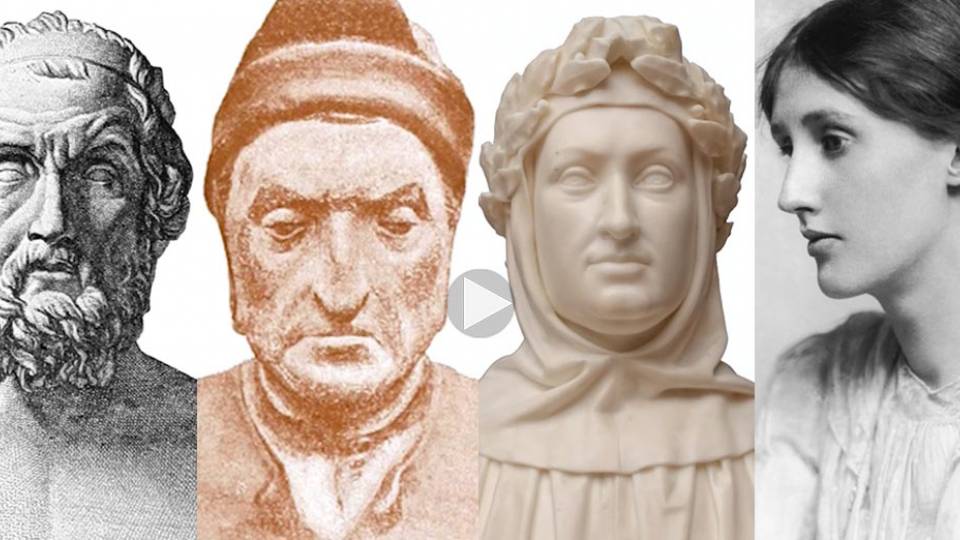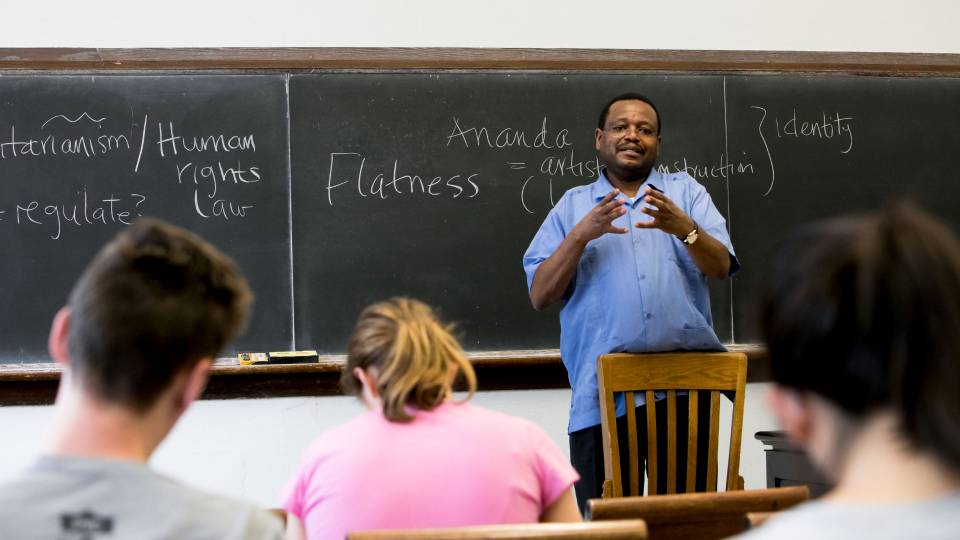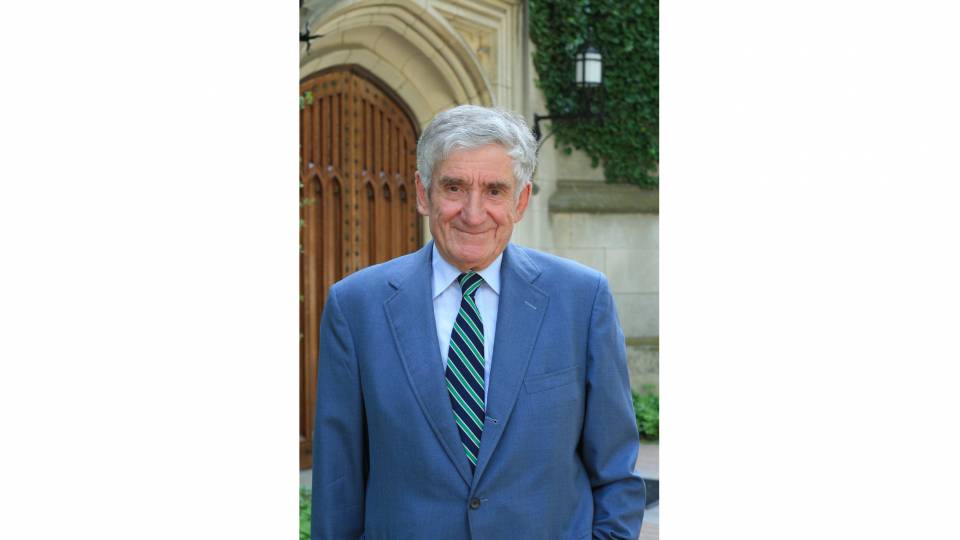"Two semesters. 10 professors. 3,000 years of culture." It's not a film trailer, but the catchphrase used to describe a "blockbuster" course at Princeton for freshmen titled "Interdisciplinary Approaches to Western Culture from Antiquity to the Modern Period." This video produced by the Broadcast Center offers comments from students enrolled in the course.
Generally referred to as the HUM sequence (HUM 216-219), this team-taught, double-credit supercourse examines Western history, philosophy, literature, religion and art from ancient times to the 20th century. The faculty represents a broad spectrum of humanities departments.

Play the "From Sophocles to Shelley " video.
The sequence's multidisciplinary approach is designed to engage students in the plurality of perspectives essential to the humanities.
Readings throughout the year range from Aristotle, Dante, Homer and Plato to Shakespeare, Flaubert, Austen and Nietzsche. "You get the scope, you get to see all the works in relation to each other, how they flow into each other. You can see how two texts present the same ideas," said freshman Paul Fanto.
"The sequence is one of our best recruiting devices for very smart students," said Carol Rigolot, executive director of the Council of the Humanities. Admission to the sequence is limited to a select number of students chosen on the basis of letters describing why they wish to enroll in the course.
"As a freshman, it sets you up for so many different disciplines. It builds you a scaffolding of all of Western thought. If you put it on your resume, it sounds like you know everything — and, in a sense, you feel like you do," said Andrew Frazier, a member of the Class of 2015.





